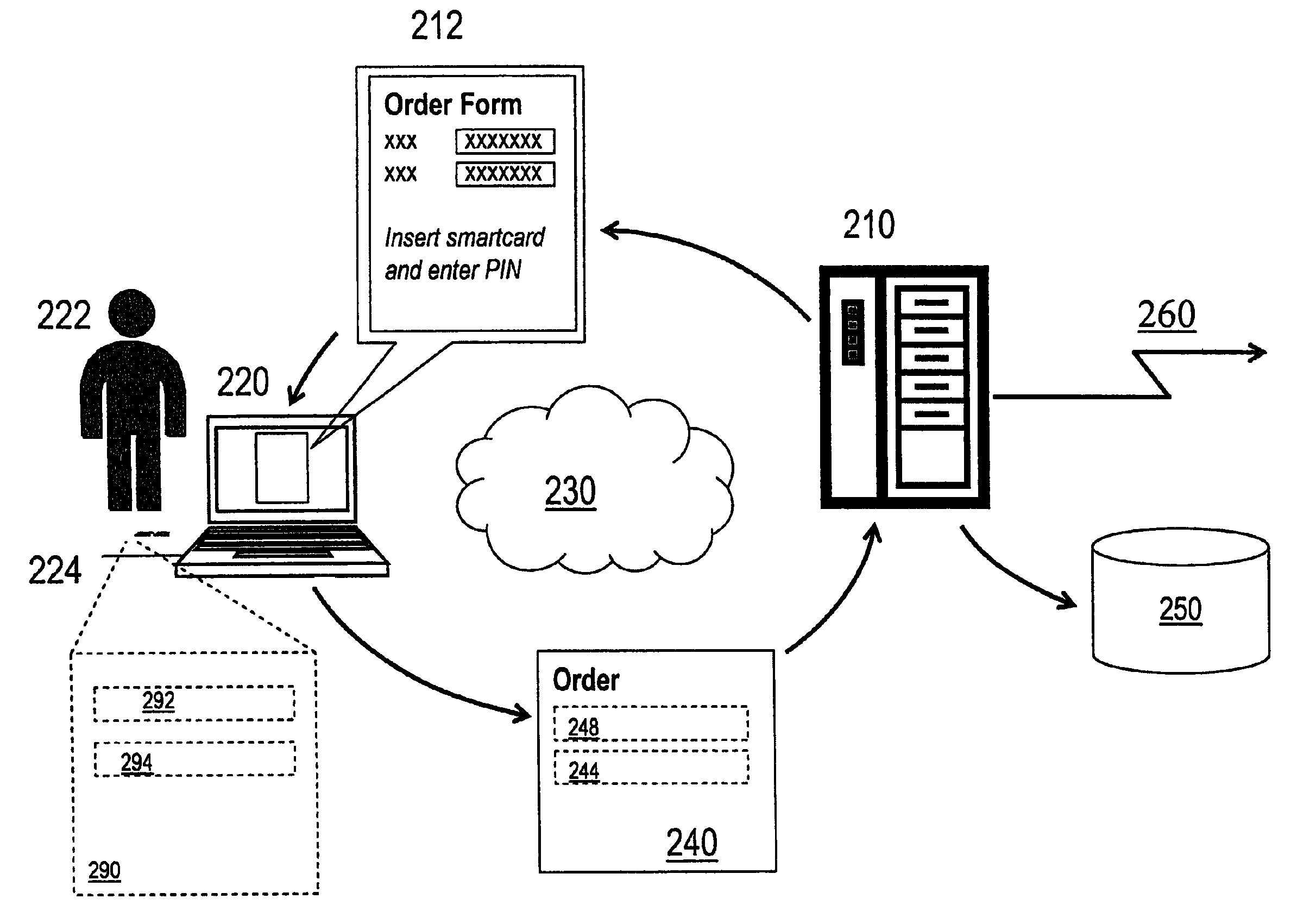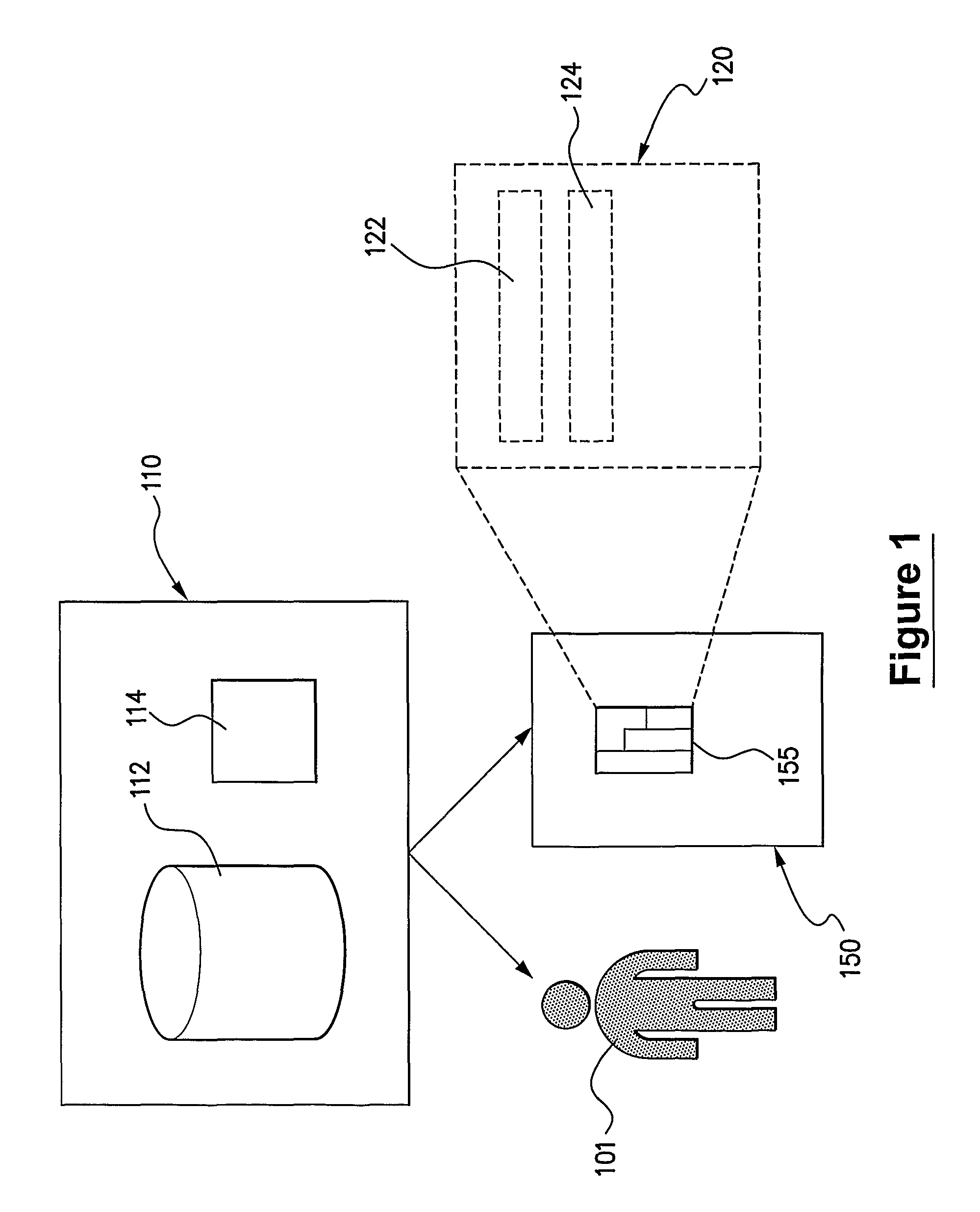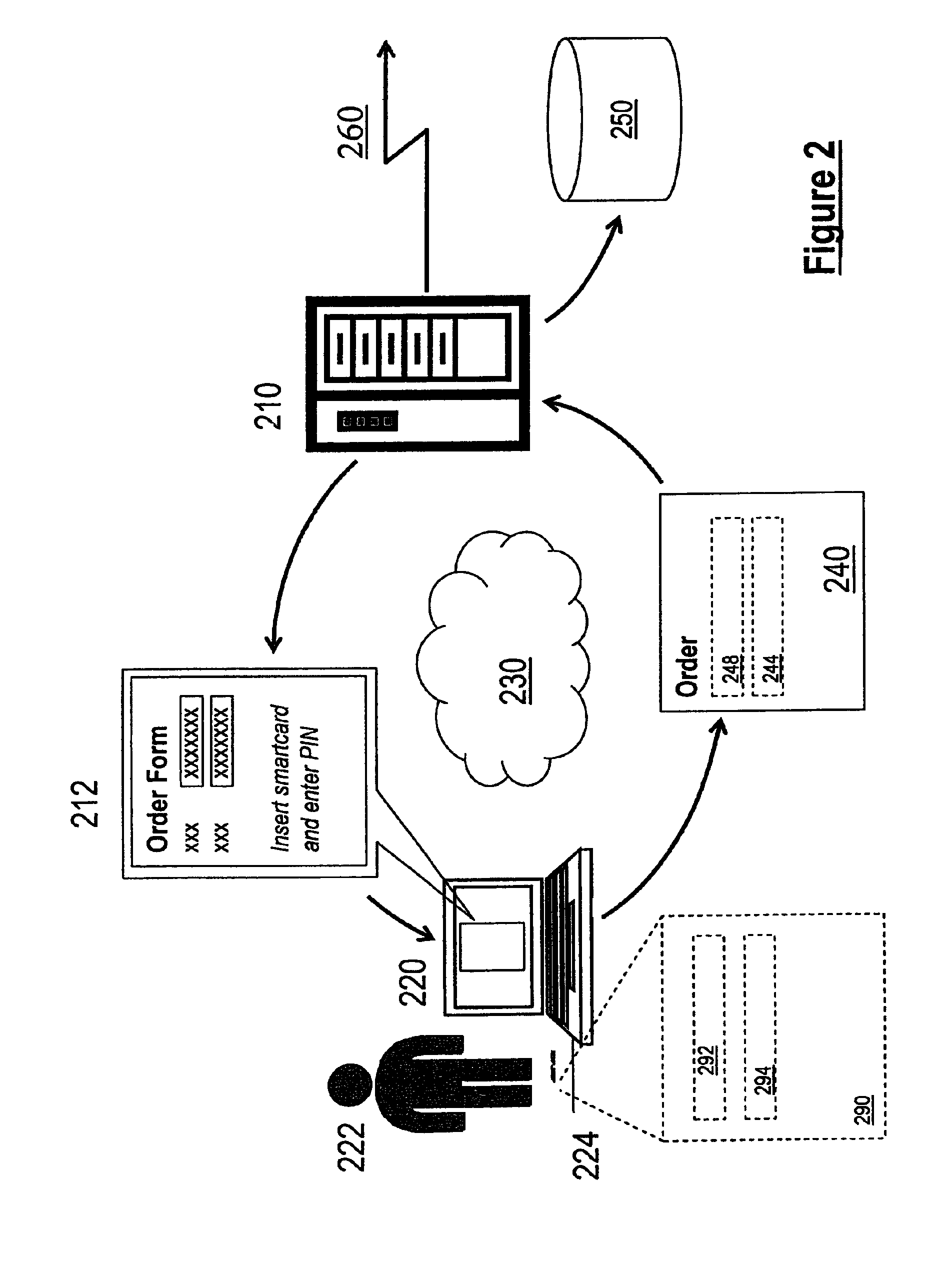Authenticating electronic financial transactions
a technology of electronic financial transactions and authenticating, applied in the field of financial transactions, can solve the problems of increasing fraud, unauthorised use by one person of payment card details of another person, and attempts to create fraudulent cnp transactions, and achieve the effect of improving the confidence that a used card is not over the limi
- Summary
- Abstract
- Description
- Claims
- Application Information
AI Technical Summary
Benefits of technology
Problems solved by technology
Method used
Image
Examples
Embodiment Construction
[0064]With reference to FIG. 1, a financial institution 110 maintains a database 112 of customer payment card details. The financial institution 110 issues to a payment card holder 101 listed in the database 112 a payment card 150. In this embodiment the payment card 150 comprises a smartcard including a processor chip 155 having secure tamper resistant storage and cryptographic processing capability. During the process of personalising and issuing the payment card 150, the processor chip 155 generates a Public Key—Private Key pair. A Public Key Certificate 120 corresponding to said Public Key—Private Key pair is created and signed by a Certification Authority 114 operated by the financial institution 110. In alternative embodiments the Certification Authority may be a separate party engaged by the financial institution for this purpose. The Public Key Certificate 120 includes the payment card number 122, thus identifying the payment card. The Public Key Certificate 120 also include...
PUM
 Login to View More
Login to View More Abstract
Description
Claims
Application Information
 Login to View More
Login to View More - R&D
- Intellectual Property
- Life Sciences
- Materials
- Tech Scout
- Unparalleled Data Quality
- Higher Quality Content
- 60% Fewer Hallucinations
Browse by: Latest US Patents, China's latest patents, Technical Efficacy Thesaurus, Application Domain, Technology Topic, Popular Technical Reports.
© 2025 PatSnap. All rights reserved.Legal|Privacy policy|Modern Slavery Act Transparency Statement|Sitemap|About US| Contact US: help@patsnap.com



